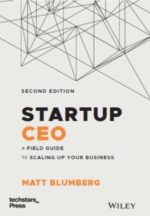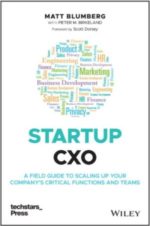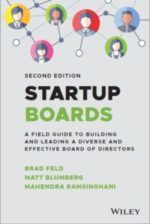Dumb Money
Dumb Money
I don’t have a counter cliche to Fred’s two-for-one this week on Passing the Hat and Ponying Up, but I’ll counter with a different, somewhat related Fred cliche that I was reminded of today when reading Paul Graham’s essay entitled A Unified Theory of VC Suckage (form your own opinions of it, but it’s nothing if not thorough and experience-based).
There’s nothing worse than dumb money backing a dumb idea or management team.
The dumb idea or team can destroy an emerging sector pretty quickly, and the dumb VC behind the deal will just keep ponying up. For the record, the converse is also true — there’s nothing better than smart money behind a great idea and solid team.
The classic dot com version of dumb money is the company who decides to give away its core service for free (the one where they compete with other players) in order to try to make money at something else. It could take 2 years and a ton of VC money before that company is out of business, having figured out that they needed to charge for their core business — and that process can wash out other companies in the process who are being smarter and more conservative about things.
So instead of just cheering that your competitor is dumb, dig in and look at how smart the money is behind the company. If the money is dumb, too, beware!
From Blog to Book – Beyond Bullets
From Blog to Book – Beyond Bullets
Hats off to fellow blogger Cliff Atkinson, who has just published a book called Beyond Bullet Points. Cliff and his company, Sociable Media, consult on PowerPoint and presentations and have a great theory about how to do great presentations.
They follow the “clear, simple, and please God not so boring” guidelines espoused by a number of us in the business world, including Brad and of course Seth. (BTW, if you haven’t read Seth’s e-book/treatise on Really Bad PowerPoint, you should do that as well, although I can’t find a link to it at the moment.)
One of the coolest parts of the book is that it really started out as Cliff’s blog, Beyond Bullets, then got Microsoft’s attention, then became a book. What a great demonstration of old and new media reinforcing each other!
Today’s Wheel: Parsley
Today’s Wheel: Parsley
Spiritually akin to my recent posting As Simple As The Wheel is Seth Godin’s posting today about Parsley, and why we don’t necessarily eat it off our plate but notice when it’s not there.
Email Deliverability Data
Email Deliverability Data
We just published our 2004 year-end email deliverability report. Feel free to download the pdf, but I’ll summarize here. First, this report is very different from the reports you see published by Email Service Providers like Digital Impact and DoubleClick, because (a) it measures deliverability across a broad cross-section of mailers, not just a single ESP’s clients, and (b) it is a true measure of deliverability — what made it to the inbox — as opposed to the way some ESPs measure and report on deliverability, which is usually just the percentage of email that didn’t bounce or get outright blocked as spam.
Headline number one: the “false positive” problem (non-spam ending up in the junk mailbox) is getting worse, not better. Here’s the trend:
Full year 2004: 22%
Second half 2003: 18.7%
First half 2003: 17%
Second half 2002: 15%
Headline number two: mailers who work on the problem can have a huge impact on their deliverability. Obviously, I’m biased to Return Path’s own solution for mailers, but I think you can extrapolate our data to the broader universe: companies that work on understanding, measuring, and solving the root causes of weak deliverablility can raise their inbox rate dramatically in a short time — in our study, the average improvement was a decrease in false positives from 22% to about 9% over the first three months. But we have a number of mailers who are now closer to the 2% false positive level on a regular basis.
Developer User Guide?
Developer User Guide?
Tom Evslin wrote a two-part series this week called “Managing Programming for CEOs” (links here for Part I and Part II). The first is pretty funny, and the second has some good thoughts in it, especially around milestone creation.
But if Tom’s had the experice he relays in Part I in real-life over and over, I have a suggestion for him: get a great head of development he can trust, and work closely with him or her over the years to build a relationship of mutual trust so those issues are no different than they are with functional managers of other departments. We are fortunate enough at Return Path to have two such individuals in Andy Sautins and Whitney McNamara (a fellow blogger).
Counter Cliche: As Simple As the Wheel
Counter Cliche: As Simple As the Wheel
Fred’s VC cliche of the week this week is about the analog analog. It builds on one of Brad’s great concepts which he blogged about here. The concept is that figuring out how a digital idea mirrors an offline idea is a better way of handicapping future success of a venture than understanding pure technology analogs.
I tend to agree with Fred, that it’s one useful lens with which to evaluate a new idea, but not the only one. So my counter cliche for the week is to look for something As Simple As the Wheel.
At Return Path, by the way, nearly every business we’re in has a clear analog analog (Email Change of Address = Postal Change of Address, Email List Rental = Postal List Rental, Email Market Rearch = Telephone Market Research, and on and on) and has been the result of real brainstorming processes and complex, nuanced thinking.
But innovation doesn’t have to be all that complex. One of my favorite examples of this is luggage. Somehow, for decades, we all travelled with suitcases or garment bags or duffel bags creating pinched nerves as they hung from our shoulders or bad backs as we gripped them and sprinted through airports.
Then someone decided to put litle wheels on luggage and change the luggage industry and the way we travel for the better. WHEELS, for goodness sake. Not ASP, not B2B, not CRM, not ERP, not the human genome project, not cold fusion.
What’s the wheel that your industry or product needs? Don’t search for the analog analog if there’s something more simple staring you in the face that can explode your market.
Why Email Lists Need to Be More Like Toothpaste
Why Email Lists Need to Be More Like Toothpaste
My colleague Mike Mayor’s column this week in iMedia Connection is a great quick read for anyone connected to the email list business. Warning! Reading this article may cause you to ask some more probing questions before your next list management or list rental event…
Counter Cliche: Don’t Just Do Something, Stand There
Counter Cliche: Don’t Just Do Something, Stand There
Fred had a great posting the other day about Analysis Paralysis. And he’s right, a lot of the time. But I’ve always thought that Newton’s third law of motion can be applied to cliches — that every cliche has an equal and opposite cliche (think “Out of Sight, Out of Mind” vs. “Absence Makes the Heart Grow Fonder”).
The counter cliche to Analysis Paralysis is “Don’t Just Do Something, Stand There” — another great lesson taught to me by my old boss at MovieFone. While startup businesses generally do need to move quickly and nimbly, there are times and places, particularly when negotiating something, where stopping or moving very slowly works to your advantage. This can be true in any situation — hiring someone, working on a strategic partnership, acquiring a company or selling your own company, and yes, on occasion, even in closing business with a client.
Slowing down or stopping a negotiation helps you accomplish two critical things to achieving an optimal result:
1. It allows you to gain a little perspective on what you’re negotiating and consider other alternatives. It’s easy to get caught up in the heat of a negotiation. While that negotiating process can be addictive, you always want to make sure you really want what you’re going after and that you’ve taken every step you can to shore up your alternatives.
2. It lets you see how important the deal is to the other party. If you change the pace of a negotiation, you can more easily see how the other party responds to that change of pace. Do they fade away, or do they keep calling and pressing for forward movement?
There’s a time and a place for everything in a startup. Sometimes it’s to run hard, but sometimes it’s to stand still.
10 Candles
10 Candles
My colleague Mike Mayor and I were reminded that yesterday was the 10th anniversary of the founding of the web design firm that would eventually become NetCreations (a company Return Path acquired last year) by Rosalind Resnick and Ryan Scott. Also, today apparently Yahoo! turns 10 (and is giving away free ice cream to commemorate the event).
In different ways, and obviously at different scales, both serve as proof that one of the Internet’s most enduring concepts is to simply allow consumers to tell you what it is they are looking for and then to give it them. Think of the hundreds of companies that did not make it to their 10th birthday partly (or even their 1st) because they didn’t get this simple concept.
Thanks to Mike for his contribution to this posting.
A Different Take on The Gates
A Different Take on The Gates
We went up to Central Park today to see The Gates. We thought it was ok, but boy was it a madhouse up there.
Anyway, we were struck at some angles by the similarity between the gates of the gates, and one of the most famous gates in the world which we saw on our trip through Asia last year: the O-torii.
The O-torrii is one of the most recognizable images of Japan. It is a 53 foot high vermilion gate rising out of the sea in front of the Itsukushima Jinja shrine on the island of Miyajima, off the coast of Hiroshima. It was built out of trunks of local camphor trees in 1875. Due to its location, it was one of the few landmark structures we saw in Asia that hadn’t burnt to the ground at least once or twice.
Check this out – perhaps it’s not entirely coincidental?
Oh, Behave!
Oh, Behave!
This week, we launched behavioral targeting for email through our PostMasterDirect group. This is a great development for us and will produce great value for clients over time by increasing response rates. It may seem like a bit of buzzword bingo since BT is the phrase of the year in the online media world, but it’s actually a product we’ve had in development for some time now.
Our VP Engineering for list and data products, Whitney McNamara, had a great posting on his blog about BT and how we do it. The whole thing is worth a read, but the real gem in my mind (and what’s most consistent with Return Path‘s philosophy about consumers and targeting in general) is at the end:
As a final note, it’s critical to remember that none of this means that the people who are collecting the data know better than that actual people on the receiving end what is appropriate and interesting. Ideally (as in the case of PMD/RP’s behavioral targeting), BT is a technique that supplements — not replaces — targeting based on people’s explicit requests for information.
And yes, I have to admit that at least a small part of the reason for this posting is the title.





